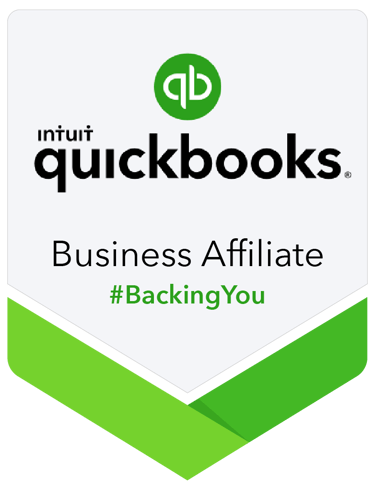Year-End Bookkeeping Checklist: Year-End Bookkeeping Checklist: Prepare for Tax Season
Get your small business ready for taxes with this step-by-step year-end bookkeeping checklist. Save money, maximize deductions, and file with confidence.
TAX INFORMATIONBOOKKEEPING
Jerry Blanco
10/6/20256 min read


Get Your Financial House in Order and Make Tax Season a Breeze (Not a Nightmare)
Let's be honest—when you started your business, you were excited about serving customers, creating products, or building something meaningful. You probably weren't dreaming about spreadsheets, receipts, and tax deadlines.
But here's the thing: those last few weeks before tax season don't have to feel like a frantic scramble through shoeboxes of receipts at 2 a.m. With a little preparation now, you can walk into tax season feeling confident, organized, and maybe even a little bit proud of yourself.
Think of this checklist as your friendly roadmap. We'll walk through exactly what you need to do to get your books ready for tax filing—step by step, in plain English, without the accounting jargon that makes your eyes glaze over.
Why Year-End Bookkeeping Actually Matters (Besides Avoiding Panic)
Before we dive into the checklist, let's talk about why this matters. Clean, organized books don't just make your accountant happy (though they will love you for it). They help you:
Catch errors before they become costly mistakes on your tax return
Maximize deductions you might otherwise miss
Make better business decisions based on accurate financial data
Save money on accounting fees (less cleanup means less billable time)
Sleep better knowing you're compliant and organized
Ready? Let's get started.
Step 1: Gather All Your Financial Documents
What you need: Bank statements, credit card statements, loan documents, receipts (yes, even those crumpled ones in your wallet), invoices, and any other papers that show money coming in or going out.
Action step: Create a simple folder system—physical or digital, whatever works for you. I recommend folders labeled by month or category (like "Office Supplies," "Travel," "Equipment"). The goal isn't perfection; it's accessibility.
Pro tip: Take 15 minutes right now to photograph any paper receipts with your phone. Apps like your phone's built-in scanner or free options can save these as PDFs. If that receipt fades or gets lost, you'll have a backup.
Step 2: Reconcile Your Bank and Credit Card Accounts
This is where you make sure your bookkeeping records match what actually happened in your bank accounts. Think of it like balancing your checkbook, but for your business.
Here's exactly what to do:
Open your accounting software (QuickBooks, Xero, Wave, or even your spreadsheet)
Pull up your bank statement for each month
Go through each transaction line by line
Check that every deposit and withdrawal in your bank statement appears in your books
Mark each transaction as "reconciled" or "cleared" as you verify it
What you're looking for:
Transactions in your bank statement that aren't in your books (you forgot to record them)
Transactions in your books that aren't in your bank statement (you might have recorded them twice or entered the wrong amount)
Duplicate entries
Transactions coded to the wrong category
Real talk: If you find differences, don't panic. It's normal, especially if this is your first time doing this thoroughly. Common culprits include bank fees you forgot to record, deposits that cleared a different day than you expected, or that one payment you accidentally entered twice.
Do this for every bank account and every credit card you use for business. Yes, it's tedious. Yes, it's worth it.
Step 3: Review and Categorize Every Transaction
Your Chart of Accounts is essentially your filing cabinet for money. Each category (like "Office Supplies," "Advertising," or "Professional Fees") is a drawer where similar transactions belong.
Action steps:
Go through your transactions and make sure each one is assigned to the right category
Look for anything labeled "Uncategorized" or "Miscellaneous" and give it a proper home
Be specific but not obsessive—you don't need 50 categories, but "Supplies" is better than lumping everything into "Expenses"
Why this matters: Come tax time, you'll need to report specific types of expenses. If everything's properly categorized now, generating those reports takes minutes instead of days.
Common categories for small businesses:
Advertising and marketing
Vehicle expenses (if you use your car for business)
Office supplies and equipment
Professional services (legal, accounting, consulting)
Rent or mortgage (if you have a business location)
Utilities
Insurance
Travel and meals
Software and subscriptions
Step 4: Verify All Income Has Been Recorded
This might sound obvious, but it's surprisingly easy to miss income—especially if you accept multiple payment methods (cash, checks, PayPal, Venmo, credit cards, etc.).
Check these sources:
All bank account deposits
Payment processor reports (Stripe, Square, PayPal, etc.)
Cash payments (yes, they count, and yes, you need to report them)
Bartered services (if you traded services with someone, that's income)
Canceled invoices you forgot to remove
Pro tip: Create a simple spreadsheet listing every invoice you sent this year. Check off each one that was paid. Any unpaid invoices are accounts receivable—money people owe you. You'll need to report this if you use accrual accounting (we'll save that conversation for another day).
Step 5: Clean Up Accounts Receivable and Accounts Payable
Accounts Receivable (AR) is money customers owe you. Accounts Payable (AP) is money you owe vendors.
For Accounts Receivable:
Review your outstanding invoices
Follow up on any unpaid invoices
Write off any invoices you know you'll never collect (yes, it hurts, but it's necessary for accurate books)
For Accounts Payable:
Review outstanding bills
Make sure you haven't missed recording any bills you received
Pay what you can before year-end (if it makes sense for cash flow and taxes)
Step 6: Handle Inventory (If You Sell Physical Products)
If you have inventory—whether it's products you sell or materials you use—you need to count it at year-end.
Action steps:
Do a physical count of everything you have on hand
Calculate the value (what you paid for it, not what you sell it for)
Compare this to what your books say you should have
Adjust your records to match reality
Why this matters: The IRS requires accurate inventory counts, and it affects your cost of goods sold—which directly impacts your taxable income.
Step 7: Review Loan and Credit Card Balances
Make sure the balances in your accounting records match your actual loan and credit card statements.
Check:
The outstanding principal on any business loans
Credit card balances
Any personal loans you used for business purposes
Important note: Only the interest portion of loan payments is typically tax-deductible, not the principal. Make sure these are recorded separately in your books.
Step 8: Address Mileage and Vehicle Expenses
If you use your vehicle for business, you have two options for deductions:
Standard mileage rate (track miles driven, multiply by IRS rate—65.5 cents per mile for 2023, 67 cents for 2024)
Actual expenses (track all vehicle costs like gas, maintenance, insurance and deduct the business-use percentage)
Action step: Review your mileage log. If you haven't been tracking, reconstruct what you can using calendar appointments, receipts, and your best good-faith estimate. Going forward, use a mileage tracking app—it'll save you so much hassle.
Step 9: Verify Fixed Assets and Depreciation
Fixed assets are big purchases that last more than a year—computers, equipment, furniture, vehicles. These typically can't be deducted all at once; they're "depreciated" over several years.
Action steps:
Make a list of any equipment or assets you purchased this year over $2,500
Note the purchase date and cost
Check with your tax preparer about Section 179 deductions or bonus depreciation (ways to potentially deduct these faster)
Step 10: Prepare Key Financial Reports
With everything reconciled and categorized, it's time to generate the reports you'll need for taxes and business planning.
The big three reports:
Profit & Loss Statement (Income Statement): Shows your income minus expenses—basically, did you make or lose money this year?
Balance Sheet: A snapshot of what you own (assets), what you owe (liabilities), and what's left over (equity).
Cash Flow Statement: Tracks how money moved in and out of your business.
Most accounting software can generate these with a few clicks. If you're using spreadsheets, you might want professional help creating these.
Step 11: Review for Tax Deductions You Might Have Missed
This is the fun part—finding legitimate deductions that lower your tax bill.
Commonly overlooked deductions:
Home office expenses (if you work from home)
Business-related education and books
Professional association memberships
Software and app subscriptions
Website hosting and domain fees
Business insurance premiums
Retirement contributions (SEP-IRA, Solo 401k)
Health insurance premiums (if you're self-employed)
Bank fees and merchant processing fees
Step 12: Organize Documents for Your Tax Preparer
Create a clean, organized package for whoever prepares your taxes.
Include:
Year-end Profit & Loss Statement
Balance Sheet
Bank reconciliation summaries
Receipts for major purchases
1099 forms from clients (if you received them)
W-2s (if you have employees)
Loan documents
Prior year tax return (for reference)
Pro tip: A little summary memo explaining any unusual transactions or big changes from last year will make your tax preparer's job easier—and potentially save you money on their fees.
You've Got This
If you've made it through this checklist, congratulations! You've just accomplished something many business owners dread, and you've set yourself up for a much smoother tax season.
Remember, bookkeeping isn't about being perfect—it's about being prepared. The more organized you are now, the less stressful April will be, and the more money you'll potentially save through legitimate deductions and fewer accounting fees.
Ready to Hand This Off?
If this checklist feels overwhelming—or if you'd rather spend this time growing your business instead of reconciling accounts—that's exactly why professional bookkeepers exist. We love this stuff (seriously), and we can take it off your plate so you can focus on what you do best.
Want a personalized year-end bookkeeping plan for your business? Let's talk about how we can help you close out this year strong and start the new year organized. Schedule a free 30-minute consultation to discuss your specific needs.
Share This Post
Know another entrepreneur who could use this checklist? Share this post and help them stress less this tax season!


